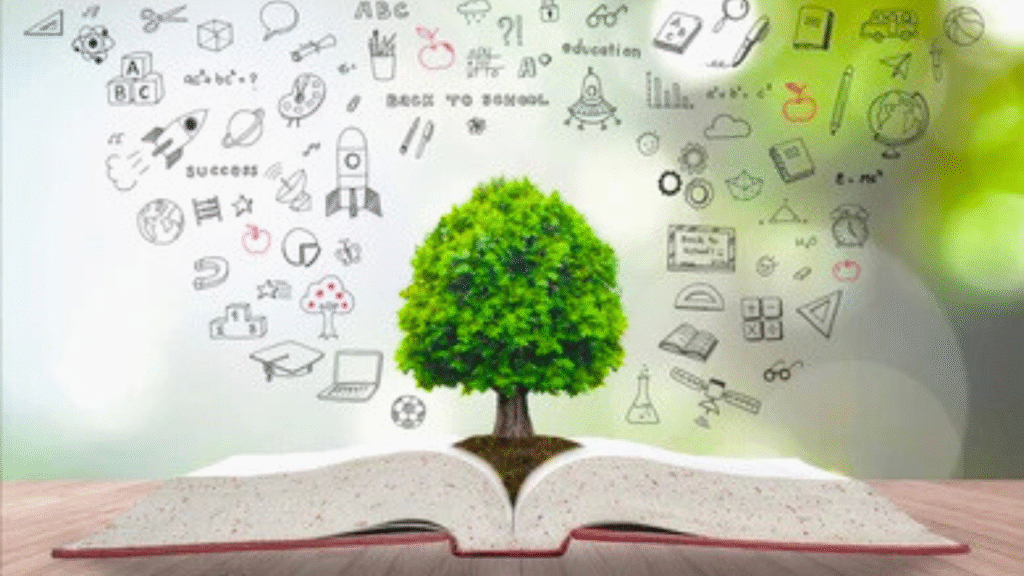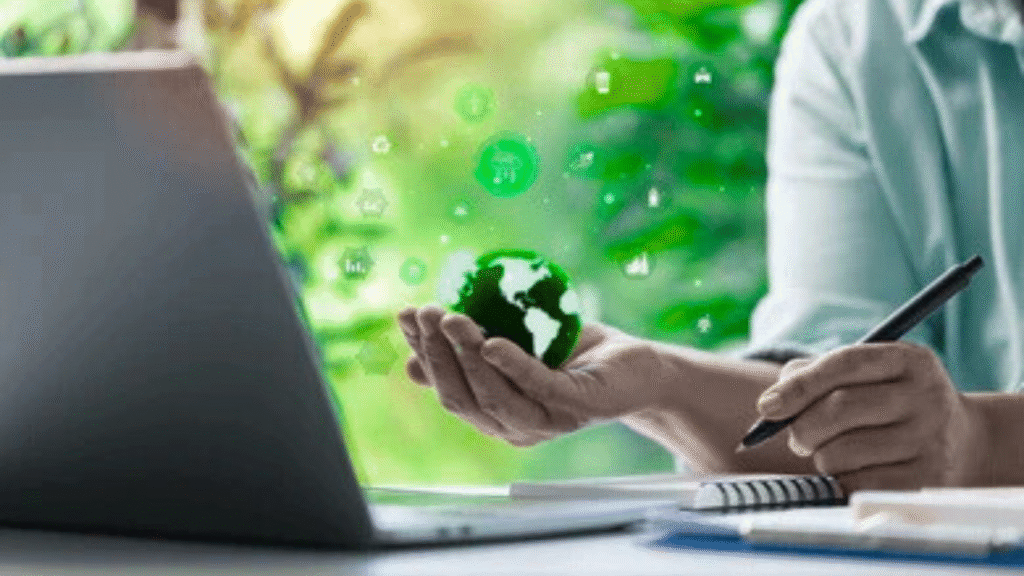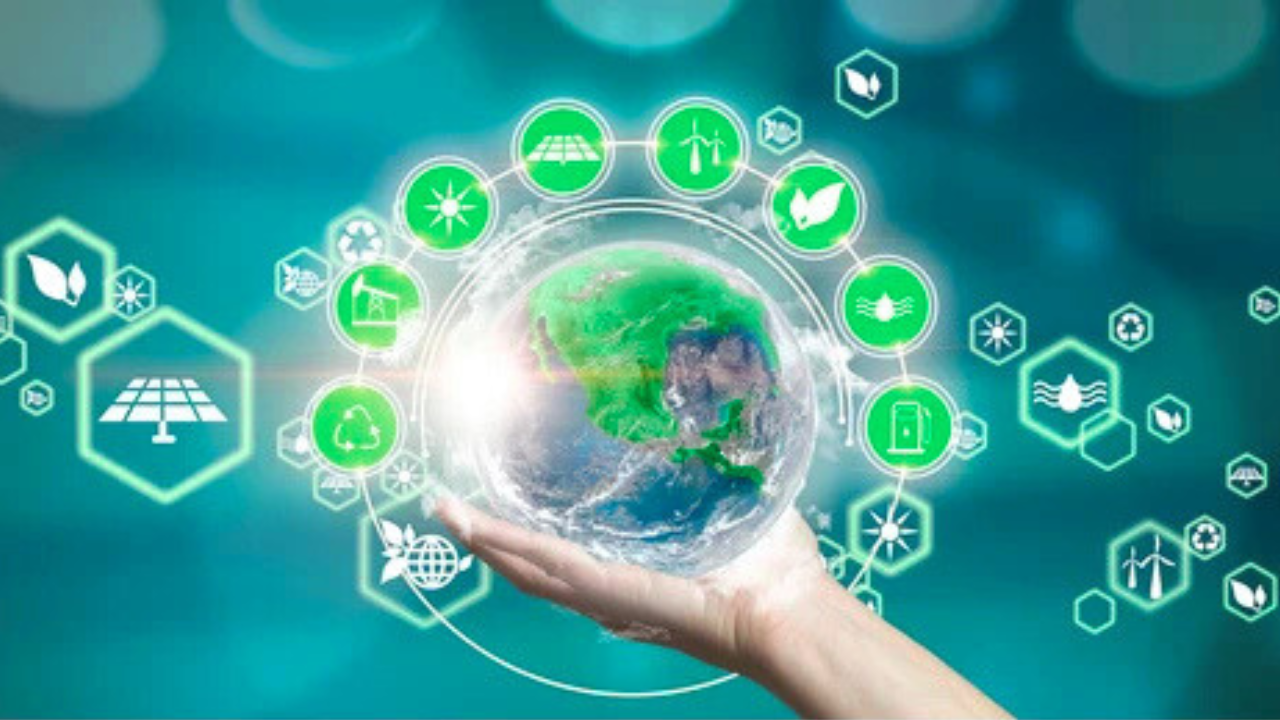Did you know that 87% of global businesses now prioritise green practices, yet many still struggle to blend nature protection with profit? Aurö represents a system where environment, economy, and technology work as one. This approach creates real results for businesses and communities worldwide.
Organisations that adopt comprehensive green methods see 34% better resource efficiency compared to traditional models. When companies merge ecological responsibility with smart business tactics, they build lasting value.
What makes this method different? It combines practical tools with measurable outcomes, helping organisations reduce waste while increasing revenue streams through intelligent planning.
Table of Contents
What Aurö Means and Where It Started
Aurö emerged from Scandinavian research labs in the early 2010s when scientists wanted to create a unified system. The goal was simple: help organisations measure their environmental footprint while maintaining healthy profit margins.
The Early Story Behind Aurö
Researchers at Uppsala University in Sweden first developed the framework in 2012. They noticed that businesses treated environmental efforts and economic planning as separate activities. This separation led to wasted resources and missed growth opportunities.
The team spent three years studying 142 companies across 12 countries. Their findings showed that businesses integrating nature-focused practices with financial planning achieved 28% higher growth rates than competitors. This data formed the foundation of what became known as sustainable development strategies.
Dr Maria Lindström, one of the original researchers, stated, “We realised that protecting nature doesn’t mean sacrificing profits. The two can support each other when planned correctly.”
Why Aurö Matters Today
Modern organisations face pressure from consumers, investors, and governments to operate responsibly. According to a 2024 Nielsen report, 73% of consumers prefer brands that demonstrate a genuine commitment to environmental protection.
Companies implementing these integrated approaches report significant benefits. Manufacturing costs drop by an average of 19% when waste reduction combines with efficient production methods. Energy expenses decrease when renewable sources replace traditional power.
The system helps businesses track metrics that matter. Instead of vague commitments, organisations measure water usage, carbon output, and resource consumption. These numbers guide decision-making and show stakeholders tangible progress.
How Aurö is Paving the New Way to Eco-Friendly Innovation
Organisations worldwide are rethinking how they design products and services. The shift toward eco-friendly innovation requires fresh thinking about materials, processes, and end-user experiences.
Examples of Eco Innovation with Aurö
Danish furniture company Norm Architects redesigned their entire product line using circular economy principles in 2023. They replaced synthetic materials with responsibly sourced wood and natural fibers. Sales increased 41% within eight months as customers appreciated the quality and environmental benefits.
The company tracked every material from source to finished product. This transparency built trust with buyers who wanted to know exactly what they purchased. Manufacturing waste dropped 67% through better planning and material use.
Another example comes from Dutch agriculture. Vertical farming operations in Rotterdam adopted integrated resource management in 2022. They reduced water consumption by 89% compared to traditional farming while producing higher yields per square meter.
These farms use sensors to monitor plant health, soil conditions, and climate factors. Digital collaboration tools allow farmers to share data and learn from each other’s results. The network grew from 8 farms to 63 within two years.
Using Aurö for Green Economic Growth
Businesses discover that environmental responsibility opens new revenue streams. Green economic growth happens when companies identify market needs while addressing ecological concerns simultaneously.
Solar panel manufacturers in Spain created financing programs that made renewable energy accessible to small businesses. Installation costs are spread over five years with payments lower than previous electricity bills. This model helped 4,200 businesses transition to clean energy between 2022 and 2024.
The manufacturers didn’t just sell products; they created partnerships. Technical support, maintenance services, and monitoring systems generated ongoing revenue. Customer satisfaction reached 94% because businesses saved money while reducing their carbon footprint.
| Business Sector | Resource Savings | Revenue Increase | Implementation Time |
| Manufacturing | 19-23% | 15-28% | 8-14 months |
| Agriculture | 34-41% | 22-35% | 6-12 months |
| Retail | 12-18% | 8-9% | 4-9 months |
| Technology | 27-33% | 31-44% | 10-16 months |
Source: European Sustainability Business Review 2024
Learning and Sharing Environmental Knowledge

Education plays a vital role in spreading effective environmental practices. Organisations need practical training that translates into real workplace improvements.
Workshops That Teach Sustainable Growth
Sustainability workshops provide hands-on training for employees at all levels. A German automotive supplier launched monthly training sessions in 2023. Workers learnt to identify waste, suggest improvements, and implement changes on production lines.
Results appeared quickly. Employee-generated ideas reduced material waste by 31% in the first quarter. The company saved €2.3 million annually through these improvements. Workers felt more engaged because their suggestions created visible change.
The workshops covered specific topics: energy conservation, material selection, waste management, and process optimisation. Each session lasted three hours and included practical exercises. Participants left with action items they could implement immediately.
Japanese electronics manufacturer Panasonic runs similar programmes across 47 facilities worldwide. Their “Green Learning Initiative” trained 18,000 employees between 2022 and 2024. The company reported €127 million in cost savings directly attributed to workshop-generated improvements.
How Aurö Helps Communities Work Together
Environmental knowledge sharing extends beyond individual companies to entire communities. Regional networks allow businesses to pool resources, share best practices, and solve common problems collectively.
The Basque Country in Spain created an industrial cooperation network in 2021. Fifteen manufacturing companies shared waste streams; one factory’s byproduct became another’s raw material. This system diverted 8,400 tonnes of materials from landfills annually.
Companies in the network meet quarterly to discuss operations, share data, and identify new collaboration opportunities. Transportation costs dropped 22% because materials moved shorter distances between facilities. The circular approach generated €4.1 million in shared savings.
Community gardens in Portland, Oregon, demonstrate how neighbourhoods apply these principles. Residents share tools, seeds, and knowledge through digital platforms. The network grew from 31 gardens in 2020 to 118 by 2024. Fresh produce feeds families while reducing food transportation emissions.
Using Digital Tools to Support Aurö’s Goals

Technology enables organisations to measure, monitor, and improve environmental performance with precision. Digital collaboration tools make data accessible and actionable for teams of any size.
How Technology Helps Sustainability
Cloud-based platforms track resource consumption in real time. A textile factory in Bangladesh installed sensors throughout its facility in 2023. The system monitored water use, energy consumption, and chemical applications minute by minute.
Managers received alerts when any metric exceeded optimal levels. Quick responses prevented waste and maintained production quality. Water consumption dropped 43% in six months without reducing output. The factory shared this data with suppliers and customers, demonstrating their commitment to responsible operations.
Artificial intelligence analyses patterns that humans might miss. A food processing company in California used AI to optimise refrigeration systems. The technology adjusted temperatures based on product type, ambient conditions, and energy costs. Annual energy bills decreased by $340,000 while product quality improved.
Digital Platforms for Eco-Friendly Plans
Mobile applications help individuals track their environmental impact. Over 12 million users worldwide now use apps that calculate carbon footprints, suggest alternatives, and reward positive behaviours.
One popular platform gamifies environmental action. Users earn points for using public transport, reducing energy consumption, or choosing sustainable products. Points convert to discounts at participating businesses. This system motivates behaviour change while supporting companies with strong environmental practices.
Data analytics for green growth helps cities plan infrastructure improvements. Barcelona installed 1,200 sensors across the city to monitor air quality, traffic flow, and energy use. City planners use this information to optimise public transport routes, identify pollution sources, and target improvement efforts.
The data showed that adjusting traffic light timing reduced emissions by 17% in high-congestion areas. Trees planted based on air quality data improved conditions in neighbourhoods that needed it most. Citizens access real-time information through a public dashboard.
You Might Also Like: HMS Photovoltaik
Managing Resources the Smart Way with Aurö
Renewable resource management requires careful planning and constant monitoring. Organizations that excel in this area treat natural resources as valuable assets requiring protection and wise use.
Protecting Nature Through Aurö Ideas
Costa Rica provides an excellent national example. The country generates 99% of its electricity from renewable sources, primarily hydroelectric, wind, and solar. This achievement resulted from decades of consistent policy and investment.
The government created incentives for renewable energy development in the 1990s. Companies investing in clean energy received tax benefits and streamlined permitting. Forest protection programs paid landowners to preserve ecosystems rather than clear them for agriculture.
Results speak clearly: forest coverage increased from 21% in 1987 to 60% in 2024. Tourism revenue grew alongside environmental protection because visitors wanted to experience preserved natural areas. The country proves that economic prosperity and environmental health can grow together.
New Zealand farmers adopted regenerative agriculture practices that rebuild soil health while producing food. These methods include crop rotation, minimal tillage, and livestock management that mimics natural grazing patterns.
Farms using these techniques report 35% higher soil organic matter after five years. Healthier soil retains more water, requires less fertilizer, and produces more resilient crops. Production costs decrease while yields remain stable or improve.
Making the Most of Renewable Resources
Smart economic planning recognizes that renewable doesn’t mean unlimited. Wind, solar, and hydroelectric power depend on weather patterns. Effective systems balance generation and consumption while storing excess energy for later use.
Iceland captures geothermal energy for heating and electricity. 85% of homes use geothermal heating, which costs significantly less than fossil fuel alternatives. The country exports its expertise by helping other volcanic regions develop similar systems.
Technology-driven sustainability enables better resource allocation. A shipping company installed route optimisation software that considers weather, currents, and port conditions. Fuel consumption dropped 16% annually by choosing efficient paths rather than traditional routes.
The company also scheduled maintenance during optimal times, reducing downtime and extending equipment life. These combined efforts saved $23 million yearly while cutting emissions substantially.
You Might Also Like: Narkes Elektriska Passionately Igniting Sweden’s Renewable Innovation
How Aurö Helps Plan Smart and Balanced Economies

Eco-economic models demonstrate that environmental protection and economic prosperity aren’t opposing forces. Smart policies create conditions where both thrive simultaneously.
Simple Eco-Economic Ways to Grow
Sweden implemented a carbon tax in 1991 at $26 per tonne of emissions. Many predicted economic disaster. Instead, the economy grew 78% between 1991 and 2024 while emissions dropped 29%.
The tax encouraged businesses to invest in cleaner technologies and more efficient processes. Revenue from the tax funds is used for infrastructure improvements and social programmes. Citizens supported the policy because they saw tangible benefits.
Renewable energy sectors created 350,000 new jobs during this period. Workers from declining industries found opportunities in growing fields. Training programmes helped people transition, reducing unemployment while building a skilled workforce.
Germany’s “Energiewende” (energy transition) shows similar patterns. The country invested €500 billion in renewable energy infrastructure between 2000 and 2024. Critics questioned whether such an investment made sense.
Results justify the spending: 46% of electricity now comes from renewables, up from 6% in 2000. Energy security improved because domestic sources replaced imported fossil fuels. The renewable energy sector employs 419,000 people with good wages and stable careers.
Balancing Nature and Business Well
Environmental and economic balance requires an honest assessment of costs and benefits. Short-term thinking creates problems that cost more to fix later. Long-term planning prevents expensive crises.
The fashion industry demonstrates both problems and solutions. Fast fashion created mountains of textile waste: 92 million tonnes annually worldwide. Cheap clothing seemed economical, but disposal costs, environmental damage, and resource depletion created hidden expenses.
Companies adopting circular models tell different stories. Patagonia repairs customer products, resells used items, and designs for durability. This approach builds customer loyalty worth more than quick sales of disposable products.
The company’s revenue grew consistently over 20 years while maintaining environmental commitments. Customers trust the brand because actions match words. Employee retention rates exceed industry averages because workers feel proud of their employer.
| Environmental Practice | Initial Investment | 3-Year ROI | Employee Satisfaction Impact |
| Renewable Energy | High | 140-180% | +23% |
| Waste Reduction | Medium | 220-290% | +31% |
| Circular Design | Medium-High | 180-250% | +27% |
| Resource Efficiency | Low-Medium | 310-420% | +19% |
Source: Global Sustainability Investment Report 2024
Ways Aurö is Changing the Way We Live and Work
Positive environmental impact becomes visible when communities and businesses commit to meaningful change. Real examples inspire others to take action.
Success Stories of Aurö Adoption
Singapore transformed from a polluted port city to one of the world’s greenest urban areas. The government planted millions of trees, created strict environmental regulations, and invested in public transport. Today, 47% of the island is green space.
The city-state collects every drop of rainwater. Treatment systems purify it for drinking and industrial use. This water independence matters tremendously for a nation with no natural freshwater sources. The system cost $7 billion but ensures long-term survival and prosperity.
Public housing developments include rooftop gardens, vertical greenery, and energy-efficient designs. Residents pay lower utility bills while enjoying cleaner air. Property values increased because people wanted to live in well-designed, environmentally responsible communities.
Melbourne, Australia, created an urban forest strategy in 2012. The goal: increase tree canopy coverage to 40% by 2040. Each tree has an ID number and an email address. Citizens can check on “their tree’s” health and send it messages.
This creative engagement works. Volunteer tree-watering programmes involve 3,000 residents who care for young trees during dry periods. Heat island effects decreased in neighbourhoods with more trees. Air quality improved measurably.
How Aurö Creates Positive Impact Everywhere
Climate-smart solutions adapt to local conditions rather than applying one-size-fits-all approaches. What works in Norway might fail in Nigeria. Effective methods respect cultural contexts and available resources.
Bangladesh faced severe flooding that destroyed crops and homes annually. Engineers developed floating gardens that rise with floodwaters. Farmers grow vegetables year-round regardless of water levels. These gardens produce four times more food than traditional plots.
The system uses local materials: water hyacinth, bamboo, and soil. Construction costs remain low enough for poor families to build them. 150,000 families now use floating gardens, improving food security and income.
Kenya’s M-PESA mobile money system enabled green financing in unexpected ways. Solar companies offer pay-as-you-go systems through mobile payments. Families without electricity can now afford solar panels by paying small daily amounts.
Over 2 million households gained electricity access through this model. Children study after dark. Small businesses operate longer hours. The system proves that eco-innovation practices succeed when they solve real problems affordably.
Auro’s Role in Building Greener Communities for Tomorrow
The path forward combines proven methods with continuous improvement. Future-ready sustainability means staying flexible while maintaining core commitments to environmental and economic health.
What We Learn from Aurö Today
Environmental research integration shows that successful programmes share common elements. They measure results honestly, adjust based on data, and engage stakeholders throughout the process.
Organisations that publish their environmental data build trust. Transparency attracts investors, customers, and talented employees who want to contribute to meaningful work. Companies hiding poor performance eventually face exposure and backlash.
The Global Sustainability Vision requires cooperation across borders. Climate and ecosystems don’t respect political boundaries. International agreements, technology sharing, and collaborative research accelerate progress.
Small actions multiply when many people participate. Installing LED bulbs seems trivial until millions do it. Collective impact creates the change that individuals can’t achieve alone.
Steps to Join the Aurö Movement
Start with measurement. Organisations can’t improve what they don’t track. Simple energy audits reveal surprising waste. Water consumption patterns show opportunities for conservation.
Engage employees at every level. Front-line workers often spot inefficiencies that managers miss. Creating channels for suggestions and rewarding good ideas generates enthusiasm and results.
Partner with others. Industry associations, local networks, and online communities share knowledge freely. Learning from others’ successes and mistakes accelerates improvement.
Set realistic goals with specific timelines. Vague commitments like “be more sustainable” accomplish nothing. “Reduce water use by 15% within 12 months” creates accountability.
Celebrate progress publicly. Share achievements with customers, employees, and communities. Success stories inspire others and build momentum for broader change.
Digital modelling for the environment helps visualise impacts before implementing changes. Simulation software tests different scenarios, identifying optimal approaches without expensive trial and error.
Sustainable learning platforms offer courses, certifications, and peer networks. Professionals update skills while building connections with others pursuing similar goals. Education never stops in this rapidlydvancing field.

